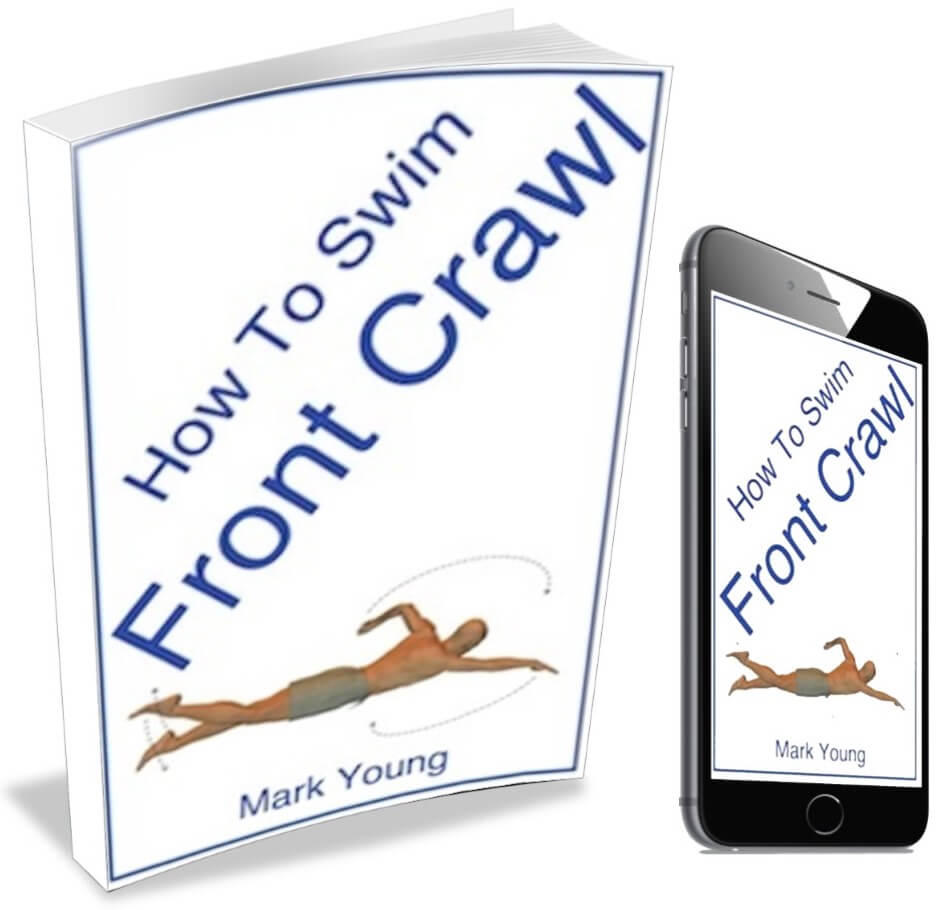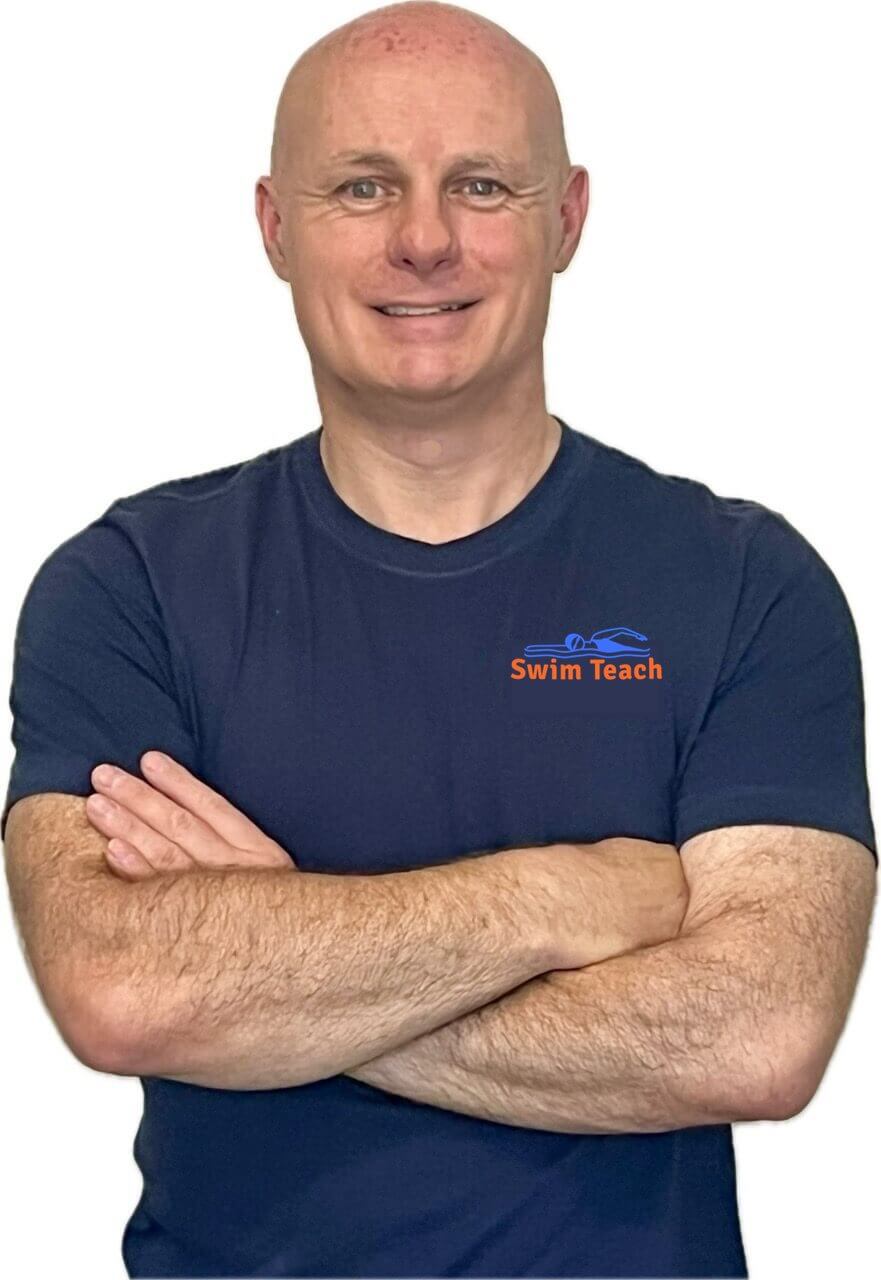- Swim Teach Home
- front crawl
- Front Crawl Breathing
- Swim Longer Distances Without Getting Tired
Swim for Longer
How do I learn to sustain front crawl for more than 2 lengths and swim for longer?
Two factors will determine how long you can sustain front crawl for; your efficiency through the water and your stamina. Both of these factors work hand in hand to help maintain front crawl for long distances.
Efficiency through the water is determined by technique. Simple adjustments like keeping your head still when not breathing, arms not pulling too deep or recovering to high, hands entering the water in line with the shoulder and keeping your feet together, all add up to make your body more streamlined through the water.
Stamina is down to plain old fitness. Front crawl is the fastest of all swimming strokes and it is easy to swim too fast without realising it. Start slowly, concentrating on your technique and breathing.
Try breathing every three arm pulls to being with; alternating the side you breathe and see how long you can maintain this breathing pattern. Then switch to breathing every stroke when you start to get tired.
Swimming fitness is like any other fitness, it will improve over time the more you do and push yourself.
Try counting how many arm pulls it takes you to complete one length of the pool. This is a good measure of your efficiency. However many you take; try over time to complete a length using less. You will achieve this by stretching further with your arm entry and pull harder and further back with each arm pull. Together with a streamlined body position, you will begin to swim lengths of the pool using less effort and less energy.
My ebook How To Swim Front Crawl contains over 20 separate swimming exercises to help all parts of freestyle, including body position and breathing. You can download it, print out the parts you need and take them to your pool to try out. Click the link below for more information.
HOW TO SWIM FRONT CRAWL EBOOK: everything you need to master front crawl swimming stroke. 22 easy drills that focus on each part of front crawl technique. From body position to breathing and timing. Decades of teaching experience all packaged into 1 easy file. Download to your device and master front crawl TODAY! (click here for an instant preview).
Don't miss out! Click here for more details on how to get your copy.
Difficulties Swimming Long Distance
I have been a casual swimmer for a couple of years now. I have difficulties swimming long distances. My breath is dead after 5 x 25m laps. I realized one of the major problems is my breathing.
I am a right-hander; my breathing on the right side looks perfect, and I can grasp air by turning my head over the right shoulder. It is my breathing on the left side over the shoulder that I have difficulties with, especially after 2 laps and more. My mouth often breathing below the surface of the water, the water is splashing into my mouth, and my head is coming up too much instead of simply spinning over the side. However, my right side breathing is doing great.
How can I improve on this mistake? What type of training, exercises or practices should I follow to resolve this problem in order for me to enjoy swimming for longer duration and longer distances?
Your problem has been caused by breathing to your right side constantly for too long, and now the muscles in your neck and shoulders have been trained to perform this movement naturally.
You have a very common muscle imbalance in your neck and shoulders. Basically, the muscles in your neck allow your head to roll to your right side easily because they have been trained to do so and so have the flexibility to perform the movement. Ask the muscles on the opposite side of your neck to roll your head to the left, and they have become shortened and less flexible, resulting in a decreased range of movement.
We all have a favourite side that we breathe on, and that side will always feel easier and more natural than the other. However, when it comes to sustaining a regular breathing pattern for front crawl, it is important to breathe on both sides. It looks like you have identified this as your problem.
Ok, so how to get more movement from the left side? Time to train your weakness.
There are several exercises to try out in the pool. Firstly try kicking with a kickboard held out in front in your right hand. Kick your legs and swim front crawl using only your left arm, breathing only to your left side.
You may have to exaggerate your movement to begin with, to avoid getting water in your mouth. Turn your head more than you need, maybe to the extremes of facing upwards. Although this is technically incorrect, you can always readjust later, and the extra movement will help towards increasing your flexibility.
Try swimming a few lengths of front crawl, breathing only to the left side, either with each stroke or every other stroke.
Gradually over time, the muscle imbalance in your neck will correct itself, and your shoulder muscles will also become trained to deal with a greater movement of your head.
It sounds obvious, but all you are doing is training your weakness, and with some practice and perseverance, you will be able to make a movement that at the moment is uncomfortable and awkward into one that is second nature.
Hopefully, I have highlighted some of the mechanics behind your problem you can focus on putting it right.
My ebook How To Swim Front Crawl contains over 20 separate swimming exercises to help all parts of freestyle, including breathing. You can download it, print out the parts you need and take them to your pool to try out. Click the link below for more information.
 How To Swim Front Crawl
How To Swim Front Crawl$9.99

I am a member of the Amazon Associates Program and I will earn a commission from qualifying purchases at no extra cost to you.
Shortness Of Breath In The Pool
Swimming fitness is very different to running and cycling fitness because it uses more muscles constantly and rhythmically and therefore places more demands on our aerobic system.
The two most common mistakes swimmers make when swimming front crawl is breath holding and swimming too fast.
As far as breathing goes, it is far easier to breathe out whilst swimming, blowing out into the water slowly and gradually, as slowly as you can at the time, depending on your level of exhaustion. It is very common to hold your breath without even knowing it, and breathing out helps keep you relaxed during your stroke.
Front crawl is the fastest swimming stroke, and that is often taken literally. People swim front crawl with such power and put such great effort into their arms and legs and are often left wondering why they are so exhausted.
So, slow down, and you will be surprised. Extend your arm pulls by reaching further, slow down, leg kick and breathe out into the water in a slow, relaxed way. Roll your head to the side to breathe again and maintain a long, stretched and flat body position. The net effect of all this will be the length of the pool swum using fewer arm pulls and, therefore, less energy.
The frequency of your breathing is completely up to you. Breathing every 3 arm pulls on opposite sides is an efficient breathing pattern and breathing every arm pull on the same side is also a common pattern for swimming longer distances.
My ebook How To Swim Front Crawl contains over 20 separate swimming exercises to help all parts of the front crawl, including breathing and timing. You can download it, print out the parts you need and take them to your pool to try out. Click the link below for more information.
HOW TO SWIM FRONT CRAWL EBOOK: everything you need to master front crawl swimming stroke. 22 easy drills that focus on each part of front crawl technique. From body position to breathing and timing. Decades of teaching experience all packaged into 1 easy file. Download to your device and master front crawl TODAY! (click here for an instant preview).
Don't miss out! Click here for more details on how to get your copy.





